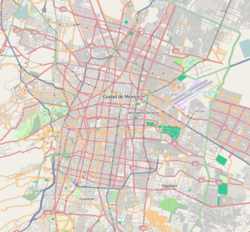| Annual passenger ridership (Line 1) |
|---|
| Year | Ridership | Average daily | Rank | % change | Ref. |
|---|
| 2024 | 0 | 0 | 189/195 | −100.00% | [1] | | 2023 | 6,452,370 | 17,677 | 68/195 | +3.92% | [1] | | 2022 | 6,208,767 | 17,010 | 56/195 | −15.89% | [1] | | 2021 | 7,381,863 | 20,224 | 21/195 | +7.49% | [16] | | 2020 | 6,867,731 | 18,764 | 32/195 | −44.48% | [17] | | 2019 | 12,369,808 | 33,889 | 31/195 | −0.94% | [18] | | 2018 | 12,486,567 | 34,209 | 27/195 | −0.72% | [19] | | 2017 | 12,577,366 | 34,458 | 29/195 | −3.39% | [20] | | 2016 | 13,018,121 | 35,568 | 28/195 | −2.07% | [21] | | 2015 | 13,293,703 | 36,421 | 29/195 | +3.20% | [22] |
| Annual passenger ridership (Line 7) |
|---|
| Year | Ridership | Average daily | Rank | % change | Ref. |
|---|
| 2024 | 2,253,311 | 6,156 | 164/195 | +19.69% | [1] | | 2023 | 1,882,564 | 5,157 | 159/195 | +16.41% | [1] | | 2022 | 1,617,125 | 4,430 | 163/195 | +41.25% | [1] | | 2021 | 1,144,856 | 3,136 | 168/195 | −29.09% | [16] | | 2020 | 1,614,531 | 4,411 | 180/195 | −31.31% | [17] | | 2019 | 2,350,325 | 6,439 | 179/195 | −1.38% | [18] | | 2018 | 2,383,106 | 6,529 | 179/195 | +6.40% | [19] | | 2017 | 2,239,783 | 6,136 | 180/195 | −8.32% | [20] | | 2016 | 2,443,127 | 6,675 | 177/195 | −2.18% | [21] | | 2015 | 2,497,451 | 6,842 | 165/195 | −0.38% | [22] |
| | Annual passenger ridership (Line 9) |
|---|
| Year | Ridership | Average daily | Rank | % change | Ref. |
|---|
| 2024 | 21,125,323 | 57,719 | 4/195 | +16.23% | [1] | | 2023 | 18,176,022 | 49,797 | 5/195 | +12.42% | [1] | | 2022 | 16,168,449 | 44,297 | 10/195 | +53.00% | [1] | | 2021 | 10,567,781 | 28,952 | 13/195 | +0.33% | [16] | | 2020 | 10,533,419 | 28,779 | 15/195 | −35.52% | [17] | | 2019 | 16,335,719 | 44,755 | 20/195 | −6.06% | [18] | | 2018 | 17,390,292 | 47,644 | 18/195 | −0.87% | [19] | | 2017 | 17,542,320 | 48,061 | 17/195 | −3.78% | [20] | | 2016 | 18,231,719 | 49,813 | 17/195 | +3.32% | [21] | | 2015 | 17,645,401 | 48,343 | 17/195 | −0.04% | [22] |
|









